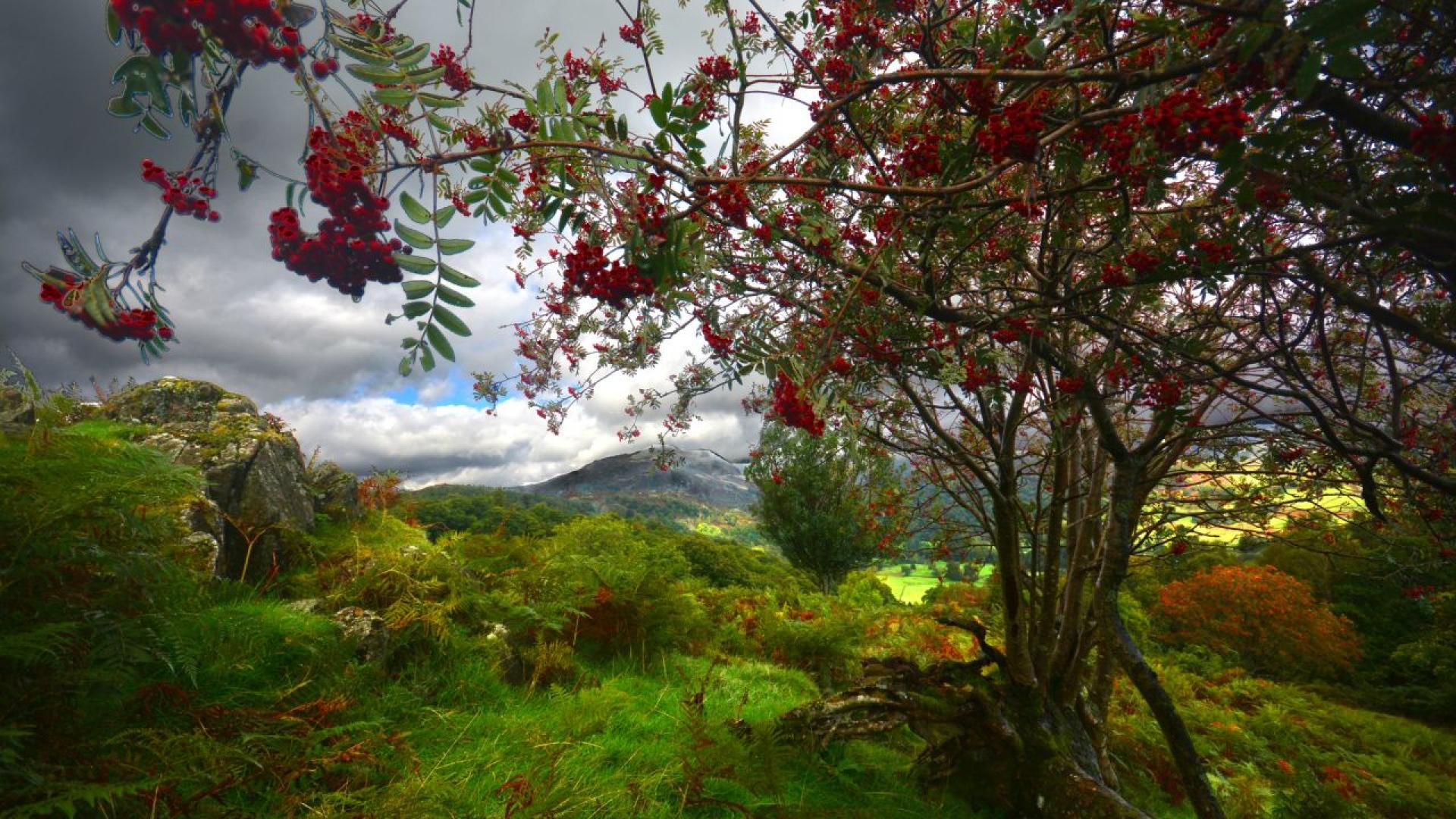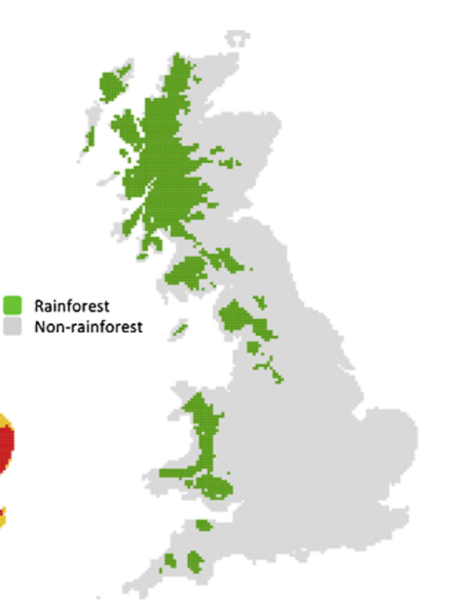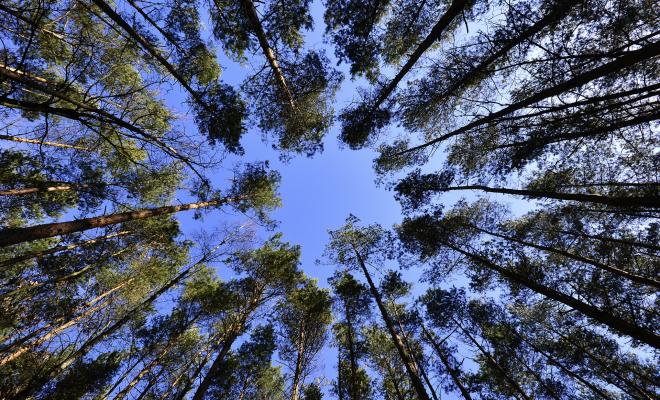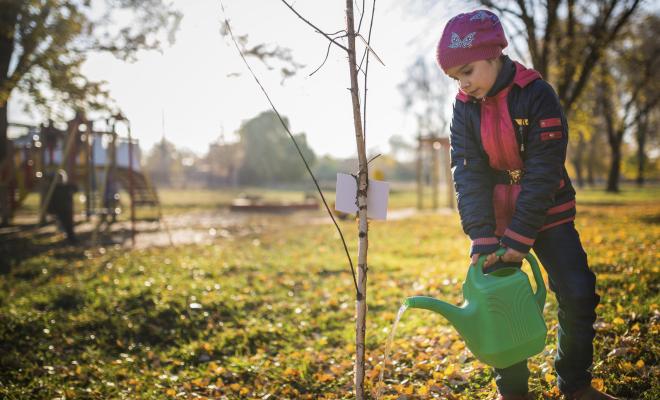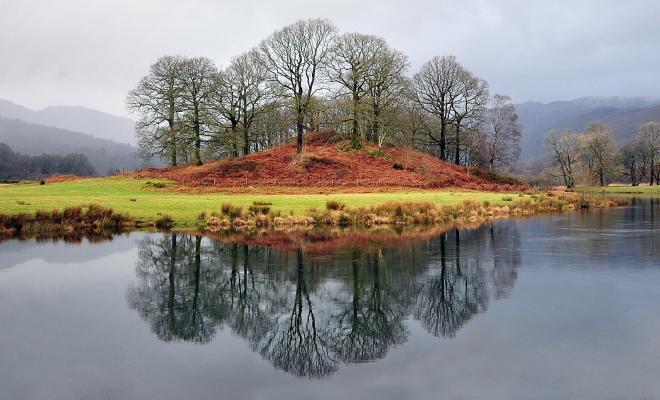Danny Gross29 Sep 2020
Executive summary
England’s national parks contain many of our most iconic landscapes – from the craggy hilltops of the Peak District, to the purple blooming heather of the New Forest and the shimmering waters of the Lake District. They are visited by tens of millions of people each year, and their landscapes are often the first images that spring to mind when we think about nature in England.
But so far, England’s national parks have failed to rise to the challenge of the climate and ecological emergencies. This is crucial because our national parks – which cover roughly a tenth of England’s land and enjoy privileged planning protections – offer enormous opportunities for natural climate solutions that can absorb greenhouse gases and help wildlife thrive, such as woodland creation and peatland restoration.
Vast swathes of land in England’s national parks were once filled with temperate rainforests and wild woods. But Friends of the Earth’s new mapping research reveals that only 15% of England’s national parks are now covered in woodland. In fact, some of our most famous national parks have lower woodland cover than some major cities. There’s less woodland cover in the Yorkshire Dales than in London, less in the Peak District than in Leeds, and less in the Lake District than in Sheffield.
It’s vital that the right trees are grown in the right places, so Friends of the Earth commissioned mapping consultancy Terra Sulis to identify suitable woodland opportunities in national parks and across England. The analysis reveals that it would be possible to more than double total woodland cover (from 15% currently to almost 35%) in national parks without infringing on Priority Habitats, protected nature sites, valuable farmland, peatlands and other sensitive sites.
What’s more, a survey we carried out of England’s National Park Authorities reveals that over half of them do not even hold information about the extent of woodland created within their national park boundaries. And for the remainder, only tiny areas of new woodland have been established in the past five years.
To address the climate and ecological crises, we need to restore a wide variety of habitats in our national parks, not just woodlands. However, a Freedom of Information response obtained by Friends of the Earth from Natural England reveals that a much lower percentage of habitat in nature sites (Sites of Special Scientific Interest, SSSIs) are in favourable condition in our national parks (26%) than in England as a whole (39%). Our precious peat bogs have the potential to be huge carbon sinks, but only 9% of upland bog in our national parks are in favourable condition – less than the national average.
A major obstacle to natural climate solutions in national parks is that mitigating climate breakdown is not even part of their statutory purposes. They are required to conserve and enhance natural beauty, wildlife, cultural heritage and public enjoyment of our natural parks. But the greatest existential threat facing our planet – climate chaos, which is already claiming the lives of people around the world – has been left out of the equation.
It doesn’t have to be this way. We are at a critical moment for the future of our national parks. The government commissioned an independent review by journalist Julian Glover into our national parks and Areas of Outstanding Natural Beauty, which was published in September last year. However, the government has not yet published its response.
Our national parks could be beacons of hope for natural climate solutions – brimming with native broadleaf woodlands, agroforestry, restored peat bogs and species-rich grassland. National Park Authorities face major barriers to transforming these landscapes, but with the right support from the government, they can blaze a trail for national parks to become carbon negative with the help of woodland creation and ecosystem restoration.
Bringing back the long-lost woodlands
How much of England's national parks are covered in woodland?
An understanding of the history of England’s woodlands can help inspire a new vision for our national parks. Reforesting parts of England’s national parks would represent a return to the roots of our distant past: thousands of years ago, vast areas were once filled with wild woods and temperate rainforest. For example, Dartmoor was almost entirely covered in trees following the last Ice Age. Similarly, most of the Lake District was once covered in forest. A 2016 scientific study found that over 20% of Britain’s land surface has bioclimatic conditions characteristic of a temperate rainforest zone. An analysis of this study’s temperate rainforest zone map (see map below) shows that at least four of England’s national parks are in the temperate rainforest zone: the Lake District, the Yorkshire Dales, Exmoor and Dartmoor. Tiny fragments of temperate rainforest remain today.
But now, less than 15% of England’s national parks is covered in woodland, according to our geospatial analysis. Although this is higher than woodland cover in England as a whole (10%), it is only a fraction of the potential woodland cover for these areas. Several of Britain’s most iconic national parks have lower woodland cover than our large cities. For example:
- Woodland cover in the Yorkshire Dales (4.1%) is lower than London (4.5%).
- Woodland cover in the Peak District (8.4%) is lower than Leeds (9.8%).
- Woodland cover in the Lake District (12.6%) is lower than Sheffield (13.3%).
Mapping woodland opportunities in national parks
Friends of the Earth commissioned research from mapping consultancy Terra Sulis to identify woodland opportunities in national parks and across England. Its analysis showed that it would be possible to increase total woodland cover in national parks from less than 15% to almost 35%, without infringing on Priority Habitats, designated conservation areas.
The analysis of potential woodland cover screened out Priority Habitats, Special Protection Areas, Special Areas of Conservation, Ramsar Sites, Sites of Special Scientific Interest, National Nature Reserves, Local Nature Reserves, Moorland Line. We also excluded OS Green Space, valuable farmland (grades 1-3a), peatlands and Grade 4 land that’s regularly used for growing crops. We assumed an ongoing reduction in use of land for pasture as meat and dairy consumption declines, which government health guidelines recommend, thereby freeing up space for woodland. The spatial modelling also excluded urban areas, non-agricultural land, water bodies, non-Priority Habitat semi-improved grassland. Peat soils were screened out (using proxies – Grade 5 land and the Moorland Line – and comparing results to unpublished Natural England maps of peat soils).
Use the woodland opportunity tool
The areas shaded above show opportunity areas for new woodland. Whether they’re converted to woodland or not must be decided locally. And before any tree planting or woodland creation happens, it’s vital to carry out an ecological survey to ensure rare wildlife is not harmed. It’s important also to consider whether the land in question is suitable for natural regeneration – where trees can re-seed without the need for planting – or whether some planting is needed, to provide a local seed source.
The woodland opportunity map uses open national datasets to assess potential woodland cover. To assess the suitability of local sites for woodland creation, we recommend supplementing this with local datasets, including Local Wildlife Sites, County Wildlife Sites and Local Environmental Records Centres data on priority habitats.
The table below summarises existing woodland cover and potential woodland cover (existing woodland cover plus opportunity areas for woodland creation) in national parks. With the exception of the Broads, it is possible to substantially increase woodland cover in every national park in England. In many upland national parks – Dartmoor, Exmoor, the Lake District, the Peak District and the Yorkshire Dales – potential woodland cover is more than double existing woodland cover.
This woodland opportunity mapping analysis for national parks is not comprehensive – there will be some unsuitable sites for woodland creation that have not been captured by our national datasets. However, our analysis shows there is huge potential for expanding woodland cover while ensuring that the right trees are grown in the right places. National Park Authorities should map out the most suitable areas for woodland across their national parks, supplementing our data with local datasets (including restricted common land and archaeological sites) and local expertise about the area.
Long-term woodland cover targets are vital for encouraging landowners and land managers to create more woodlands and enabling local tree nurseries and other suppliers to plan for the additional demand for trees, thereby reducing dependence on tree imports. The draft England Tree Strategy recommends that all local authorities set local woodland cover targets. Recently, Dartmoor National Park Authority consulted on whether to set a woodland cover target in its Management Plan. All National Park Authorities should follow the lead of other local authorities by setting ambitious woodland cover targets with deadlines and interim targets to monitor progress.
Woodland creation in national parks
The recent Landscapes Review by Julian Glover urged National Park Authorities to set out ambitious tree planting plans as part of their Management Plans. The review mentioned that "there are no specific figures for either tree cover or planting rates in national landscapes but work in this review suggests they have often been slow to support [woodland creation]".
To fill this information gap, Friends of the Earth surveyed national parks in England and Wales to identify how many hectares of woodland have been created over the past five years. In response to our survey, six English National Park Authorities (the Broads, Dartmoor, Exmoor, the Lake District, the New Forest and the South Downs) said they do not hold information about woodland creation in their own national parks, which we think is a major oversight. It is vital that they work with Natural England, the Forestry Commission and local landowners to gather information about woodland creation, and publish it on the National Park Authority’s website so that the public can monitor it.
The other four English national parks had created only small areas of woodland, according to their survey responses (see table below). In all of them, the area of total woodland created over the past five years was less than 1/3 of a percent of the total area of the National Park. The Yorkshire Dales national park created the most woodland over the past five years, establishing 618 hectares, although its overall woodland cover is still by far the lowest of all of England’s national parks (see section above).
To put these figures in perspective, Cairngorms National Park has recently set a target to create 1,000 hectares of woodland per year by showing "how new and inspiring woodlands can complement agriculture, moorland management and peatland restoration." The geographical and historical contexts of England’s national parks are different to the Scottish Highlands. However, our evidence on woodland creation in England’s national parks reveals a lack of ambition.
Natural regeneration of broadleaved woodland represents a big opportunity for both carbon sequestration and biodiversity, as the trees established would be well-suited for local wildlife. In interviews, some National Park Authorities officers expressed an interest in rewilding, but in our survey, almost none of them were able to provide evidence of the amount of woodland created by natural regeneration. Only Northumberland Park Authority recorded a significant amount of new naturally regenerated woodland, but the reason they have gathered this data is to prevent the spread of conifer plantations, rather than to promote the natural regeneration of broadleaved woodland. In the Yorkshire Dales no woodland was established by natural regeneration.
Obstacles and solutions to creating woodlands
Several National Park Authorities and landowners are keen to create more woodlands and trees but they have been hamstrung by a government subsidy regime that is not fit for purpose. Government funding is crucial to compensate landowners for woodland creation, particularly for broadleaved woodland, which is not as profitable as conifer plantations. The expansion of woodland and trees in national parks should be linked to a just transition for farmers, in which they are financially supported to implement natural climate solutions. For woodland creation to be financially viable, the revenue (including subsidies) needs to match or exceed the income they currently earn from agricultural subsidies and farm income.
Currently, woodland creation maintenance grants run out after 10 years, which is a major problem because landowners and managers need a long-term, continuous return on their investment. Grant funding for agroforestry is also not currently available in England, although it has been in several European member states and in a restricted form in Scotland and Wales. An agroforestry grant in England should be introduced as soon as possible to promote such schemes, prior to the rollout of the Environmental Land Management system.
There also needs to be a greater recognition of the value of scrub, with brambles and briars providing natural protection for saplings against grazing. “The thorn is the mother of the oak,” according to the ancient forestry saying. Ending the prejudice against scrub inherent in the subsidy regime – with land managers required to remove "ineligible features" (including trees and scrub) from fields to receive basic payments – is an essential first step after Brexit. There is also a lack of funding for woodland creation via natural regeneration, which can be better supported by providing a regular stream of income to landowners for leaving land to regenerate.
England’s national parks are still primarily farmed landscapes, and it is vital that the social and economic needs of local communities are met. As meat and dairy consumption falls, more land can be freed up to create wilder, more natural landscapes for people to visit and enjoy, while creating jobs in tourism, forestry and nature restoration. For example, several Lake District landowners have collaborated on a large-scale rewilding project called Wild Ennerdale, where broadleaf woodland has been expanded by planting and natural regeneration. More projects like this would enable areas within national parks to embody the spirit of the international definition of national parks as "natural or near natural areas set aside to protect large-scale ecological processes." All of England’s national parks are designated by the International Union for Conservation of Nature as category 5 "Protected Landscapes", in which the interaction of people and nature has created distinct landscapes.
Restoring habitats in national parks
To maximise biodiversity and carbon drawdown, we need to restore the wide range of existing habitats within national parks, in addition to creating new woodlands. To assess the quality of these habitats, Friends of the Earth obtained data from Natural England about the condition of Sites of Special Scientific Interest (SSSI) Broad Habitats in all of England’s national parks. SSSIs are the main protected nature sites in the UK. The government’s objective is to achieve "favourable condition" for all SSSIs, which means that their habitats and features are in a healthy state and are being conserved by appropriate management. SSSIs in England have generally been in poor condition in England for a long time. Alarmingly, a smaller percentage of the total area of SSSIs are in favourable condition in national parks (26%) then in England as a whole (39%).
The condition of peatlands, such as blanket bogs, is particularly important for tackling climate breakdown. In the UK, peatlands store more carbon than any other habitat type, including woodlands. When peatlands such as blanket bog are in good condition, they act as carbon sinks, absorbing carbon dioxide from the atmosphere and storing it underground as peat. However, when they are in poor condition, the peat erodes, releasing vast quantities of carbon dioxide. Upland bog is the second largest habitat type in England’s national parks. Shockingly only 9% of the total area of upland bogs in our national parks is in favourable condition, compared to over 11% in England as a whole. There are many promising examples of peatland restoration projects in England’s national parks, although it can take many years to restore blanket bog to a healthy condition. Overall, upland bogs in national parks are in poor condition, posing a major threat to the climate.
National Park Authorities face major obstacles to restoring habitats, including that they own only tiny fragments of land within their national parks, and have limited powers over how landowners manage their land. This is why the government should implement the Glover Review’s recommendation to strengthen the requirements of public bodies to support the statutory purposes and management plans of national parks.
National Park Authorities are also ideal candidates for owning and managing land within national parks, because they are accountable to the local community and have statutory purposes and duties, including conserving and enhancing wildlife. For example, the South Downs National Park Authority has recently bought Seven Sisters County Park to restore habitats for wildlife. The government should provide financial mechanisms for National Park Authorities to gradually buy up critical nature sites within national parks.
What's the purpose of England's national parks?
Another barrier to natural climate solutions in national parks is their statutory purposes. There are two statutory purposes for national parks in England and Wales (The Broads has an additional purpose to protect the interests of navigation):
- Conserve and enhance natural beauty, wildlife and cultural heritage.
- Promote opportunities for the understanding and enjoyment of the special qualities of national parks by the public.
England’s national parks also have a duty to "seek to foster the economic and social well-being of local communities within the national parks".
The statutory purposes partially address the need to tackle the ecological emergency, by conserving and enhancing wildlife. But they completely fail to address the climate emergency. Last year, Parliament declared a climate emergency and the government set a new target of net zero greenhouse gas emissions by 2050. The science is clear that all of us must act now to avert a climate catastrophe, and public support for strong climate action has never been higher. The lives of millions, if not billions, of people – particularly those living in poorer countries and younger people – hang in the balance.
National parks have enormous potential for natural climate solutions that absorb greenhouse gases while enabling wildlife to flourish. But the promotion of a traditional idea of "natural beauty" and "cultural heritage" has often preserved landscapes under conditions that are damaging for both biodiversity and the climate. It is important to recognise that there can be a trade-off between conserving natural beauty and cultural heritage on the one hand, and the need to mitigate climate and ecological breakdown on the other hand, which involves creating new habitats (such as broadleaved woodland), restoring existing habitats (including peat bogs) and creating more dynamic, wilder ecosystems.
The government-commissioned Landscapes Review by Julian Glover recommended that the first statutory purpose of national parks should be amended as follows: "Recover, conserve and enhance natural beauty, biodiversity and natural capital, and cultural heritage".
However, this proposed statutory purpose avoids the elephant in the room by neglecting to mention the climate crisis. It is inadequate to just mention “natural capital”, which is a broad and contested concept. The Natural Capital Committee defines natural capital as “that part of nature which directly or indirectly underpins value to people”, and it includes minerals, bodies of water, soils, the atmosphere, and all the services they provide. But given the existential threat that climate breakdown poses to the planet, and the unprecedented public demand for climate action, the statutory purposes for England’s national parks should specifically mention mitigating climate breakdown, as part of a holistic set of ecosystem services. This would help National Park Authorities and landowners within national parks to give greater weight to natural climate solutions.
National Park Authorities leading the way
Seven National Park Authorities have declared a climate emergency, with at least three of them (Northumberland, South Downs and the Yorkshire Dales) setting a target for the national park as a whole to become net zero by 2040. However, aiming for net zero emissions is not ambitious enough as a final destination. For the country as a whole to become net zero, our national parks will need to be carbon negative, sequestering more than they emit. This is because they cover vast areas of land, are less urbanised than the country as a whole, and have a disproportionately high potential to absorb carbon dioxide through peatland restoration, woodland creation and other natural climate solutions.
What’s more, as the environmental economist Kate Raworth argues, aiming for net zero is "intentionally stopping on the threshold of something far more transformative" ("Doughnut Economics", p. 218). Instead of aspiring to do no harm, national parks should help to restore the living world. The Yorkshire Dales has set an example on this by seeking to become carbon negative by 2040.
Recommendations
The government has a crucial role to play in supporting natural climate solutions in national parks. As part of its response to the Landscapes Review, the government should take the following measures:
- Amend the statutory purposes of national parks to include mitigating climate breakdown, as part of a holistic set of ecosystem services.
- Support National Park Authorities to coordinate natural climate solutions, such as woodland creation and peatland restoration, across national parks in England.
- Introduce financial mechanisms to support National Park Authorities to buy up land within their national parks to restore critical habitats and ecosystems.
- Strengthen the requirements of public bodies to support the statutory purposes and management plans of national parks, as recommended in Glover’s Landscapes Review.
- Provide more funding to landowners for growing trees and woodlands suitable for National Park landscapes. This includes introducing a grant for agroforestry, woodland maintenance grants that are not restricted to 10 years, and annual grants for naturally regenerated broadleaf woodland.
Recommendations for National Park Authorities
- Set targets to become carbon negative within the entire national parks, with carbon sequestration from natural climate solutions exceeding greenhouse gas emissions. Management Plans should outline how these targets will be delivered.
- Set long-term woodland cover targets for each national park, with a timeframe and interim targets to monitor progress.
- Conduct mapping analysis of the most suitable locations for the creation of new woodlands and trees within each national park, combining information from national and local datasets, as well as local expertise.
- Gather and publicly share data on the extent of woodland creation – including planted and naturally regenerated woodland – in each national park.
- Collectively write to the government, setting out the government policies that are needed for national parks to effectively tackle the climate and ecological crises.
At this critical moment in the world’s response to the climate and ecological emergencies, there is an opportunity to make England’s national parks trailblazers for natural climate solutions. With the right support from the government and National Park Authorities, land workers can help to restore – not just conserve – the living world by reviving our long-lost woodlands, expanding agroforestry and recovering the mosaic of precious habitats in our national parks.
If you're a National Park Authority officer or government civil servant working on national parks, we’d love to hear from you. You can contact us at [email protected]


